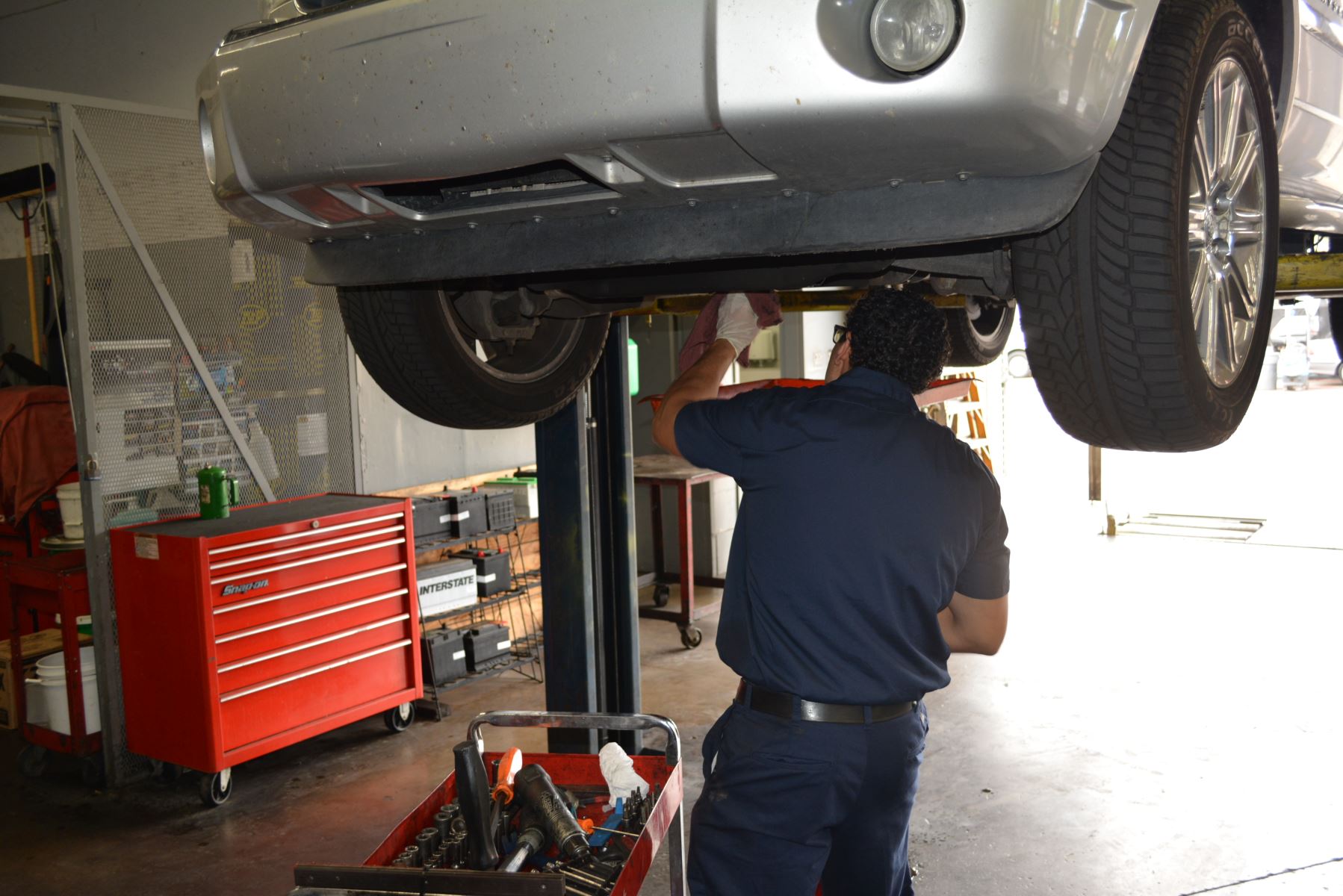
Is your car drifting on the road? Is the steering not as responsive as it normally is? Does something just feel off when driving? If so, there might be a problem with the wheel alignment on your car that needs to be addressed by a certified professional technician.
However, poor alignment is not the only potential cause of these problems—meaning it’s time to put on your Sherlock Holmes hat to determine if you actually need a wheel alignment. But don’t worry, it won’t be tough if you follow these 5 easy steps to identifying if your car needs a wheel alignment.
Step 1: Eliminate Other Tire Issues
Aside from poor alignment, tire issues are the other main culprits that cause symptoms like drifting and unresponsive steering. The first step in identifying if you have an alignment issue is to eliminate any other tire issues. Check the air pressure in all of your tires, because low air pressure could be causing similar problems. Although obvious, make sure your tires are the same size because that could cause drifting. Finally, check the wear on your tires since old tires could have wear and tear that affects your steering.
Step 2: Inspect your Parked Alignment
The next step is to visually inspect the alignment of your car’s wheels (a tape measure and level is helpful here). Your car’s alignment is normally a little bit “toe in,” which means each tire is angled slightly turned in, but sometimes tires can be angled a little too much into the center. Measuring the distance between the front and rear centerlines of the tires should tell you if this is the case. The vertical alignment (camber) can be also tested by using a level on the top of the tire.
Step 3: Check Out the Tire Tread
The next clue to poor alignment is abnormal wear on the tire tread that’s more than the usual wear and tear. A car that is aligned too much toe-in will have lots of wear on only the outside of the tires. Problems with the bearings, shocks, and steering gear box can also cause abnormal wear on the tires, resulting in alignment problems.
Step 4: Give it a Quick Road Test
Once you’ve inspected the alignment and tire tread while parked, it’s time to take your car out for a road test. First, find a smooth, flat, and straight stretch of road. Next, drive with a loose grip on the wheel so that you can tell if the car is pulling either way without you steering. While you are driving, listen closely to see if you can hear any scraping, whining, or grinding sounds because those could indicate a problem. Finally, have somebody follow you to see if the front and back wheels are going along in the same groove. If they’re not you could have a problem with the actual frame of your car instead of the alignment.
Step 5: Take Your Car into a Trusted Auto Repair Center
Once you’ve done your sleuthing and gotten all the facts, you should be able to have a pretty good idea if you have a wheel alignment problem or if some other issue. The final step now is to take your car into a trusted auto repair center to get the issue fixed. Once that’s done, you can actually enjoy a nice drive with your properly aligned wheels.
If you’ve worked through the first 4 steps and are looking for a trusted auto repair center in San Diego to take care of your wheel alignment, look no further than Convoy Auto Repair. Our certified technicians provide the best wheel alignment services in San Diego, so you can go back on the road worry-free. Make an appointment with a certified technician today.